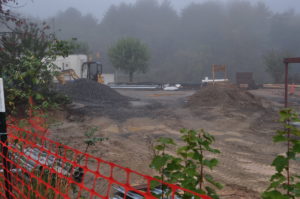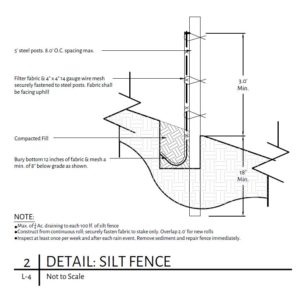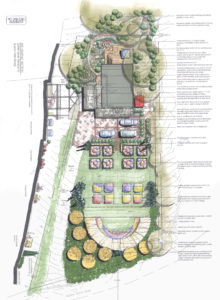Design Process of a Landscape Architecture Project
Step by Step (not like on TV)
Programming / Initial Meeting:
The first critical step in any project is the initial site meeting with owners. We review boundary surveys and any available base mapping information that should be available for this meeting. We discuss the elements they desire, style preferences, and how those aspirations fit with budget. We walk the property to look at slopes, drainage, tree and canopy cover, existing vegetation, drive access, views, utilities…all existing aspects for consideration in final design. We discuss construction budget guidelines. Using all our discussions and information, a project narrative is prepared to describe the project, discuss constraints and opportunities, and itemize the landscape architectural design program.
Proposal:
Using the program information and project narrative, a landscape architectural fee proposal is prepared for approval. Our fees are typically lump sum agreements in which the program items discussed are provided for a fixed fee. Clients typically feel more comfortable knowing in advance what will be designed and how much those services will cost. Each site, owner, program, and project is different, as are fees. After proposal preparation and presentation to owner, we await approval before beginning work.
Site Assessment or Topographic Survey:

Practicing in the mountain and piedmont region means that the earth surface is constantly sloping, so topography is always a consideration. Since a landscape architect not only designs but also solves problems on paper or cyber space prior to construction, a topography survey is generally required. If a small courtyard or front garden makeover is the scope, it may be more efficient and cost effective if the landscape architect provides the limited topographic work using our own equipment and means. The landscape architect will perform a site visit to photograph existing conditions and measure locations and sizes of existing property conditions and elements for translation to the base map. If for new home construction, or for large areas, a Professional Land Surveyor is commissioned to provide the required base map topography tied to the deeded boundary survey (at owner’s expense).
Schematic Design:
 Using architectural plans, by others, and base map, the landscape architect will compile a site analysis. The site analysis summarizes all problems, opportunities and conditions that will affect the design on one page. Oftentimes, the owner may or may not see this important step, but is performed by the landscape architect nonetheless. After site analysis, the landscape architect begins design.
Using architectural plans, by others, and base map, the landscape architect will compile a site analysis. The site analysis summarizes all problems, opportunities and conditions that will affect the design on one page. Oftentimes, the owner may or may not see this important step, but is performed by the landscape architect nonetheless. After site analysis, the landscape architect begins design.
It’s at this step all those pictures you’ve saved, those notes and sketches, are all considered. Sometimes early design involves sketch alternatives. While for other projects more formalized designs using CAD is desirable. Each client’s needs differ based upon location and scope. This step is sometimes called Master Planning, but is the first step toward a finished design. For example, if for new home constructi on, then an initial driveway and auto court layout integrated with home positioning and finished floor elevations relative to topography is completed. If renovation or intimate space design, then a hand drawn and color rendered sketch plan is the preferred delivery for ease of interpretation by owner. This is the only design phase typically shown on television programs as the emphasis there is placed on build process rather than high quality design.
on, then an initial driveway and auto court layout integrated with home positioning and finished floor elevations relative to topography is completed. If renovation or intimate space design, then a hand drawn and color rendered sketch plan is the preferred delivery for ease of interpretation by owner. This is the only design phase typically shown on television programs as the emphasis there is placed on build process rather than high quality design.
Construction Documents:
After owner approval of schematic designs presented is approved, construction document preparation begins. All owner comments for changes or revisions are included as a component of the final drawing sets. Just like an architect prepares building elevations, floorplans, wall sections, and details to convey home design to contractors, so does a landscape architect prepare grading and storm water management plans, driveway layout and paving plans, planting plans, lighting plans, and construction details. We express to the contractor through the landscape plan that we don’t just want a tree in a given location, but that tree should be a Cornus florida ‘Appalachian Spring’ (Appalachian Spring variety of Dogwood Tree). And, it should be “8’ – 10’ Height and Spread, Ball & Burlap (root ball field dug), Full, Dense, and Well-Matched (to others of the same variety on same project), and comply with the American Nursery Standards Institute minimum specifications. Or rather than a 15” culvert, a 15” diameter H.D.P.E (high density polyethelene), Type S (smooth interior) with water-tight joints (gasket O-rings at junction points between pipe lengths to prevent leakage and subsidence below pipes). Construction documents become even more critical if multiple contractors are bidding on the same project scope where low-bid wins the contract ensure owners receive the proper construction products and techniques for the best price. With most construction projects, the landscape architect earns their fees back in cost savings due to limited change orders.
Bid Services:
We recommend only the best landscape contractors. Working in the area over 20 years has enabled HS the opportunity to know several qualified, licensed and insured landscape contractors who can provide just about every build service outside the home, from carpentry to masonry and drainage. Ordinarily, we prefer introducing the owners to the landscape contractor we feel would be best suited to the project. Circumstances sometimes dictate a formal bid process. The landscape architect will prepare the bid document and arrange interviews and site visits with selected landscape contractors to assure, credible, accurate, and comparable bids.
Construction Observation:
Once construction has commenced, the landscape architect will provide construction observation services for the owner. This component is not construction supervision. The intention is to observe construction and report to the owner the adherence to drawings and specifications. If, due to unforeseen conditions, changes are necessary to the construction drawings, the landscape architect will administer the change order and drawing alterations.

